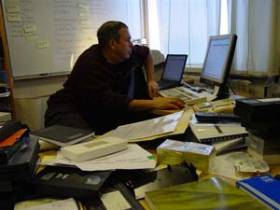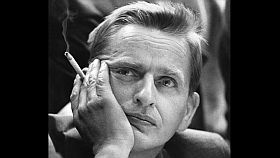


St. Petersburg Diary/ 2

First day of the Conference in Vedensky Hotel in St. Petersburg running parallel to the Message to Man festival. Theme of the meeting: Financing of International Creative Documentary Projects in the Northern Dimension Area: Cutting Edge and Trends.
The opening speech, he was given 15 minutes, he took 18, was delivered by legendary YLE commissioner Iikka Vehkalahti (photo), who came up with a sentence that was repeated several times during the day: I am now commissioning into the air, referring to the fact that many documentaries nowadays start their distribution life on the internet, eventually go to the cinema, get reviews, go to television, are made as transmedia projects…
… which was the theme of a very informative and enthusiastic speech by Swedish Annika Gustafson, who reminded the audience that interactivity is nothing new – Dickens wrote a chapter of the Pickwick Papers, let people read it, got feed back and went home to write the next chapter.
Equally informative, with a mention of four succesful crowdfunded documentary projects, was the presentation by veteran EDN staff member Ove Rishøj Jensen, who like his Swedish colleague , went back in history to point at Danish artist Asger Jorn, who in the 1930’es collected funding for a travel to Paris through the selling of works for a small prize.
Both Gustafson and Jensen came up with several links where information and inspiration can be found. AND, the organisers of the conference, Ludmila Nazaruk and Viktor Skubey, DoxPro, stated that all links and presentations will be put online after the end of the two days here in St. Petersburg. Keep an eye on this, dear readers.
Back to content. Jaak Kilmi from Estonia talked about his lost transmedia chances with films he had already done, example ”The Art of Selling”, his breakthrough film – transmedia expert Gustafson brainstormed on what he could have done… A very optimistic and energetic Sofia Gudkova talked about the Documentary Film Centre in Moscow, screenings, debates, international presentations, and Evgeny Grigoriev from the Documentary Guild, the new and young President of the filmmaker organisation, rolled out a whole list of upcoming activities that will help the filmmakers nationally and internationally. These were very promising speeches from the two young Russians, whereas Vera Obolonkina’s speech about the 24Dok was influenced by technical problems, when she was speaking online from Moscow. Gints Grube from Latvia and Rolandas Kvietkauskas from Lithuania informed about the ambition to make Latvian television more open for the independent sector of producers, respectively about the organisation of the new Lithuanian Film Centre and its – primarily – eduational activities to give a place for cross media productions.
Apart from the around 50 participants as audience in the Vedenmsky Hotel, another 40 people followed the conference online – and asked questions to the speakers – with some technical problems in the afternoon.
… and then many of us went to ”Idiot” Café…

